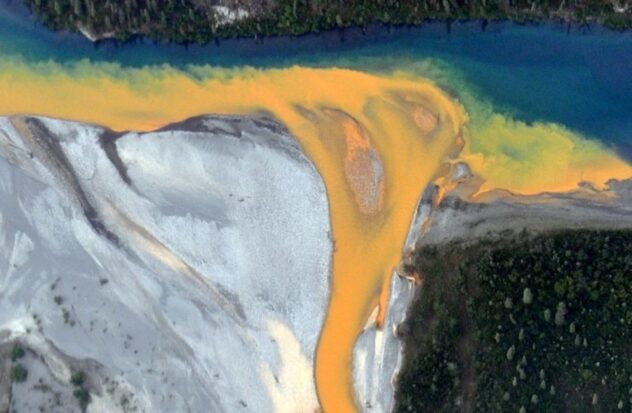MIAMI.- Dozens of the streams y rivers remotest from Alaska They are changing from a crystalline blue to a cloudy orange color, which a recent study attributes to the presence of minerals that were exposed due to thawing permafrost.
For the first time, researchers from the National Park Service, the US Geological Survey, the University of California at Davis and other institutions have documented and sampled some of the impaired waters, identifying 75 locations in an area the size of Texas in northern Alaska’s Brooks Range. The results are published in Communications Earth & Environment.
These degraded rivers and streams could have significant implications for drinking water and fishing in Arctic basins as the climate changes, the researchers said.
The case of the orange rivers
“The more we flew, we began to notice more and more orange-colored rivers and streams,” lead author Jon O’Donnell, an ecologist with the NPS Arctic Monitoring and Inventory Network, said in a statement.
O’Donnell first noticed a problem when he visited a river in 2018 that appeared rusty despite being clean the previous year. He began researching and collecting locations while taking water samples when possible in the remote region, where helicopters are often the only way to access rivers and streams.
“Stained rivers are so large that we can see them from space,” said Brett Poulin, assistant professor of environmental toxicology at UC Davis, who was the principal investigator of the research.
“You have to dye them a lot to be able to record them from space.”
Poulin, whose background is in water chemistry, thought the staining was similar to what happens with acid mine drainage, except there are no mines near any of the deteriorated rivers, including along the famous Salmon River and other federally protected waters.
One hypothesis is that permafrost, which is essentially frozen soil, stores minerals and, as the climate warmed, the metallic minerals that were once locked away became exposed to water and oxygen, resulting in the release of acid and metals.
“Chemistry tells us that minerals are eroding,” Poulin said. “Understanding what’s in the water is a fingerprint of what happened.”
The affected rivers are on federal lands managed by the Bureau of Land Management, the Fish and Wildlife Service and the NPS, including Gates of the Arctic and Kobuk Valley national parks.
Poulin and doctoral student Taylor Evinger analyzed initial samples and then collected their own on a trip last August, while others took samples in June and July. This year, they will make three trips over the summer to collect additional samples.
Some samples of the impaired waters have a pH of 2.3 compared to the average pH of 8 for these rivers. This means that the sulfide minerals are eroding, creating highly acidic and corrosive conditions that release additional metals. High or elevated levels of iron, zinc, nickel, copper and cadmium have been measured.
“We see many different types of metals in these waters,” Evinger said. “One of the most dominant metals is iron. That’s what causes the color change.”
While O’Donnell first noticed a change in 2018, satellite images have shown stained waters dating back to 2008.
“The problem is slowly spreading over time from small headwaters to larger rivers,” he said. “When emerging problems or threats arise, we must be able to understand them.”
The researchers are in the second year of a three-year grant aimed at understanding what is happening in the water, modeling what other areas may be at risk and evaluating the implications for drinking water and fish populations.
The problem is growing and affecting habitat, water quality and other ecological systems, turning healthy areas into degraded habitats with fewer fish and invertebrates. If rural communities rely on these rivers for drinking water, they could eventually need treatment and the fish populations that feed local residents could be affected.
“There are a lot of implications,” O’Donnell said. “As the climate continues to warm, we would expect the permafrost to continue to melt, and so wherever there are these types of minerals, there is the potential for streams to turn orange and degrade in terms of water quality.”
More work is needed to better understand the problem and whether rivers and streams can recover, perhaps after cold weather promotes permafrost recovery.
“I think there will be much more detailed work to follow to address some of the uncertainties that we currently have,” O’Donnell said.
Source: EUROPA PRESS





